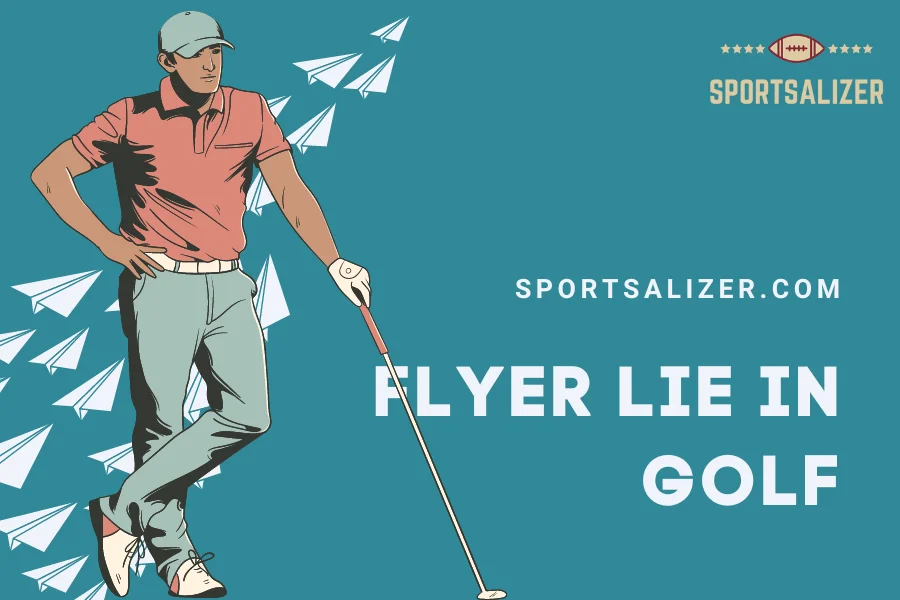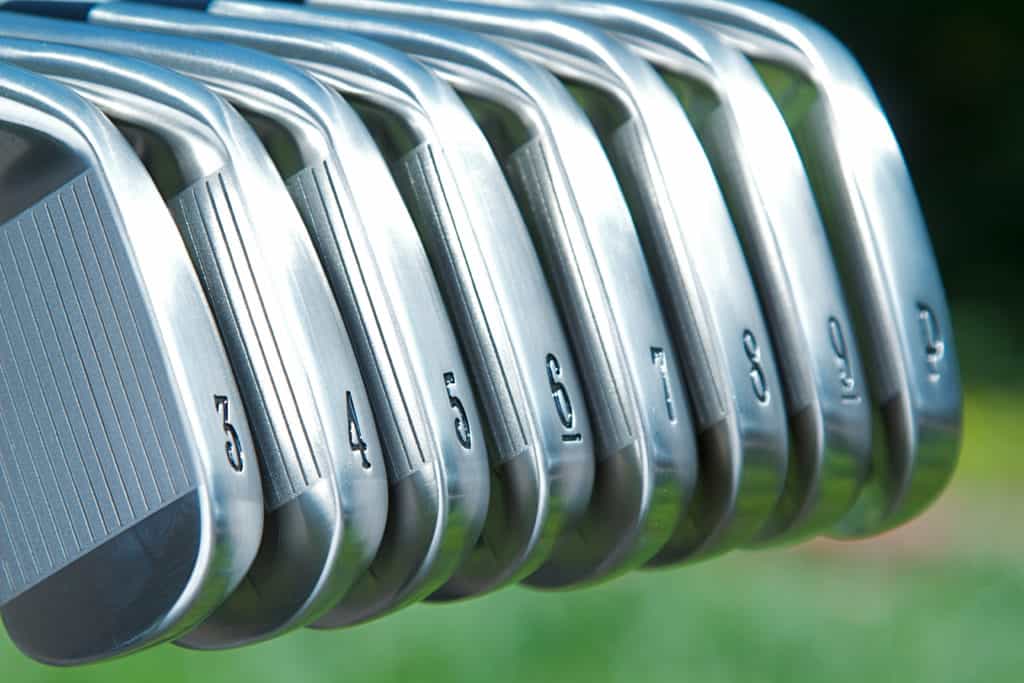What Is A Flyer Lie In Golf? Easily Explained With 6 Ways

Someone keen on golf must know “What is a flyer lie in golf”? To properly know the basics of golf, one must know all about the “flyer lie.”
Before directly jumping to “flyer lie,” let us first understand what we mean by the term “lie” in golf. The lie is simply the ball’s position in the grass, sand, or other places it may land after the shot.
A “flyer lie” in golf refers to a golf shot that flies farther than expected. This occurs due to the ball being in short to medium rough.
Here we will look at every detail you need to know about the “flyer lie” in golf.
Contents
What Is A Flyer Lie In Golf?
A flyer lie or flier occurs when a golf ball reaches farther than expected due to the ball being on short rough. It is because the grass gets trapped between the ball and the clubface.
Due to the grass being trapped, the friction between the ball and the clubface reduces. This causes the club to impart less amount of spin, due to which the ball flies further than intended.
As the ball travels farther than expected, it causes the player to hit the ball much farther than the target.
Flyer Lie According To The Clubs
As we have already established what a flyer lie is and how it occurs, let us now look into how different sizes of clubs affect the range of the ball.

1. Short Iron(9,8)
In the case of short irons, the fliers only land part of the time. The ball quickly goes up and down, and the distance traveled is not much greater.
2. Middle Iron(7,6,5,4)
The middle irons are true flyer clubs. When hit with these golf clubs, the ball goes higher and farther. The ball has very little backspin and then bounds of forward.
3. Long Iron(3 or less)
In long irons, the flyer effect becomes almost negligible and virtually disappears. This is because the heads of these clubs are not that deep, so we get an average distance shot.
How To Deal With Flyer Lies
Some steps a player can follow in dealing with flyer lies are:
- Check Ball: Before choosing the appropriate club, you must check that the ball is sitting above the ground because rough can often be deceptive.
- Use Lesser Club: If for the shot you require a specific iron club, it is suggested to use one or two greater number iron clubs than that, according to the distance supposed to be covered. For example, if you require a 6-iron club, you prefer using a 7 or 8-iron club.
- Aim Shorter: Choose a club that will land the ball shorter than you intend to, as, in flyer lies, the ball tends to reach further than required. So, if we target it at a shorter distance, it will possibly land on the green.
- Take Stance Farther: To have a steeper swing and minimize the clubface and grass contact, it is suggested to take the stance a bit farther than you would usually play in.
- Choke Down: Choking down in golf refers to holding the golf club bit downer and farther away from the butt end than you usually hold it. This helps gain more control of the club and makes it shorter. Due to this, the spin and the total carry distance decrease.
- Play a 3-quarter Swing: Hitting a 3-quarter swing helps the player in having more control of the shot distance and improves their game.
Difference Between Flyer Lie & Fluffy Lie
| FLYER LIE | FLUFFY LIE |
|---|---|
| A flyer lie occurs when the ball is sitting up on short to medium–length rough. | A fluffy lie occurs when the ball is sitting up on high or even long rough. |
| It is because the grass gets trapped between the ball and clubface and thus reduces the friction between them. | As the ball sits on long roughs, there is space between the ball and the ground. Thus, the golfer may pass the shot underneath the ball. |
| In this case, the ball tends to fly farther than expected. | In this case, the player may entirely miss the ball or make only a small contact, which results in the ball not going farther than intended. |
| To handle the flyer lies, a player can: 1. Use lesser club 2. Choke down 3. Play a 3-quarter swing | To handle a fluffy lie, a player can: 1. Avoid opening the clubface 2. Position the ball a little far from the center 3. Try to hit a flatter swing |
Types Of Lie In Golf
Except for the two lies discussed above, there are many other lies in golf, out of which a few of them are explained here:
- Plugged Lie: It is when the ball lands on wet ground and goes partially below the ground surface.
- Unplayable Lie: Sometimes, the ball is in a position on the field where the players can see it, but they can’t hit it; this is called an ‘unplayable lie.’
- Fried Egg: Another lie in golf is a ‘fried egg’ lie. It occurs when the golf ball lands on the wet/soft sand and gets partially buried in it. This makes it difficult for the golfer to hit the ball. The impression of the ball on the wet sand resembles that of a fried egg.
- Cuppy Lie: A cuppy lie is when the ball sits down as if in a slight depression. In this case, it becomes harder for the golfer to make a solid strike.
FAQs
What causes a flyer lie?
A flyer lie happens when moisture or grass is trapped between the golf ball and the club head, reducing the friction between them.
What is a good lie in golf?
A good lie is when the ball is situated in a position without difficulty hitting the shot.
What adjustments can a golfer make with a flyer lie?
To hit a flyer lie, it is suggested to take a lesser club, make a three-quarter swing and play choke down.










